I went to one of my favorite backcountry haunts this last week, an annual visit during “hopper time” when big trout look up and nobody else is around to laugh at my casting.
But the fish weren’t there.
I climbed to the river’s headwaters where wild rainbows and bull trout congregate in late summer to feast on terrestrials and lounge in sun-kissed, yet snow-chilled water. Everything was different. Everything had changed.
We had a bear of a winter, and runoff out of the central Idaho mountains was a hell-roarer. I have friends over in Hailey who watched in horror as Mother Nature temporarily rerouted the Big Wood River through their garage for a good two months. The South Fork ran high and “dusty” all through July, a testament to the amount of water coming down out of Yellowstone and pushing through not one, but two man-made reservoirs.
It was old-school runoff, the likes of which hasn’t been seen in decades. And, frankly, there’s no telling when we’ll see it again. As I write this, spring runoff is a distant memory, this past winter’s massive snowpack blazed off the mountains by yet another season of record-breaking spring and summer heat. And the northern Rockies are ablaze. Parts of Montana haven’t seen measurable rainfall since the first week of June.
There, in the cold, clear headwaters of one of my favorite places on the planet, winter’s epic snow had melted and rerouted the river, blasted through beaver ponds and left what amounted to a muddy wasteland in its wake. In years past, I’ve been able to stand at the base of time-trapped beaver ponds and sight-cast to the fish I hoped to catch. This year, where the industrious rodents had begun reconstruction, there were no fish over which to drop hoppers.
It’s tough to use words like “heartbroken” or “disappointed” when the cause of the disdain is generally natural, albeit rare. I get the notion that, in a couple of years, the beavers will have again dammed up the headwaters and created a whole new host of habitat. I’m hopeful that the river’s wild fish will have recolonized this slice of high-country paradise by then. I’m not naive, and I’m not one to shake my fist at Mother Nature and cry foul.
It’s just the way things work, especially these days, when predictions are far more uncertain and normal far less “normal.” In fact, I’m going to stop using the word “normal” anymore. It doesn’t apply to the climate in the Rockies any longer.
As I salved my hurt feelings with a cocktail next to the campfire later that night, I got to thinking about how to turn the tables on this natural “disaster.” When I woke up the next morning, I’d crafted a plan so dastardly and worthy of a Dr. Evil giggle, that even I was surprised at my excitement.
It went something like this:
If all that runoff up high had trashed some of the best wild trout habitat in Idaho, I deduced that, further down in the system, it had likely rerouted the little river as it bursts out of the mountains and flows out onto the sage steppe. It had likely undercut century-old cottonwoods, tossed wood from the upper river into the lower river and rebuilt a time-honed landscape into something new and much more fishy than the “straight pipe” that I always complained about in years past. Maybe the high water even combed over the choking willows around some really pretty water that was, at last check, nearly impossible to reach and even harder to cast over. Maybe, just maybe, as Mother Nature destroyed one stretch of water, she restored another.
I pulled into a well-used campsite along the lower river early the next day, and it didn’t take long to confirm my deepest, darkest desires. Stretched out before me was a sexy stretch of water sporting fresh structure, thoughtfully deposited by spring runoff that lasted well into summer. The willows were thinner, but still there, and new pools and runs existed where, in years past, fast water moved through, shrouded by thick cover that begged for either a flood event or a nasty wildfire.
Thankfully, it was the former that did the trick, and on my first cast—a hopper placed just inside a new tailout—I missed a nice rainbow that hadn’t thought twice about coming to the top.
The trip went from a complete wash to something more epic. As I pulled fat-and-happy, tail-walking rainbows from under newly created structure all morning and well into the afternoon, I couldn’t help but admire the new order of things, even in the face of a clearly altered climate and what was, by any barometer, an unusually violent spring flood. The upper river will require time to heal and rebuild. The lower river got a much-deserved cleanse that, quite simply, made fishing better. At least for now.
Like the fish in this great little freestoner, I had to adapt the new natural order of things. It’s proof that anglers, like the environment they visit to fish, must be willing to change course now and then, strike out in new directions and “go with the flow,” even when the flow dramatically alters the landscape, the fishing and the fish themselves.
We’re going to have to do that more in the years to come, I fear. With a changing climate, we can depend on the undependable. We can count on more frequent changes. We can count on the unexpected.
Sadly, I fear, we’ll have to count on the unknown, at least in terms of what a changing climate will do to our favorite stretches of water where time-tested techniques and approaches will require some tweaks and some changes. We might have to abandon everything we know, and start again.
Anglers can adapt. Here’s hoping our fisheries can adapt, too.

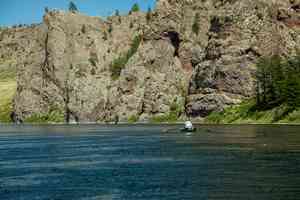
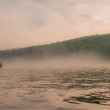




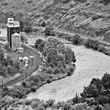

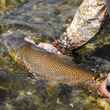

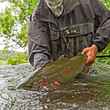
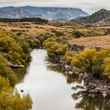

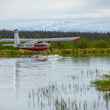
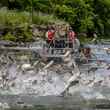
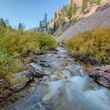




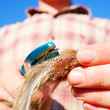
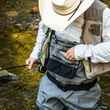
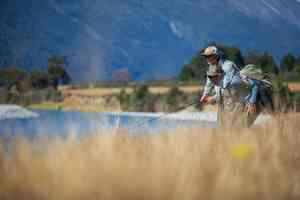
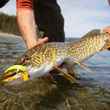


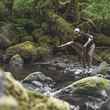
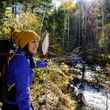

Comments